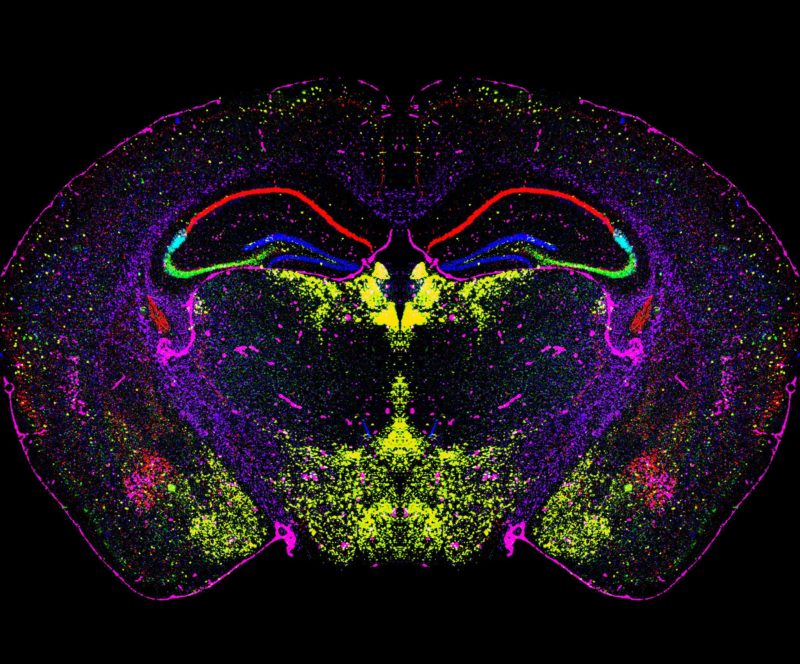
Banghart of the University of California San Diego. Evans of Salk Richard Palmiter of the University of Washington and Matthew R. Pao, Jong-Hyun Kim, Kuo-Fen Lee and Ronald M. Other authors on the study are Dong-Il Kim, Tae Gyu Oh, Gerald M. “By doing that, we can try to restore breathing without touching analgesic effects of opioids.” “We hope to explain the pain-breathing segregation at the molecular or microcircuit level,” says Han, who holds the Pioneer Fund Development Chair. Further study would also examine the connection between breathing regulation and pain perception in the brain, potentially opening the door to developing more targeted treatments for OIRD. The researchers next plan to look at whether other cell groups also play a role in OIRD. Recovery in overdosed mice was close to 100 percent, which surprised the team. “We discovered four different chemical compounds that successfully activated these neurons and brought back the breathing rate during OIRD,” said first author Shijia Liu, a graduate student in the Han lab. The team then looked at ways to reverse the process by treating the overdosed mice with chemical compounds targeted to other receptors on the same neurons, which play an opposite role as the opioid receptor (activating rather than inhibiting them). The researchers also found that, without introducing opioids, stimulating these receptors in control mice caused symptoms of OIRD. They found that mice that were genetically engineered to lack opioid receptors in these neurons didn’t have their breathing disrupted when exposed to morphine, as mice in the control group did. In the new study, the researchers identified a group of neurons that express a certain type of opioid receptor (the mu opoid receptor) and are located in the brainstem breathing modulation center they then characterized these neurons’ role in OIRD. To develop strategies to rescue OIRD with more specificity, Han’s team set out to search for the breathing neurons in the brain that also carry opioid receptors. It also works systemically, blocking opioid receptors throughout the entire body, including those that control pain. But naloxone has limitations, including a short duration that requires it to be administered multiple times. Currently, naloxone is the only medication known to block the effects of opioids and reverse an overdose. Opioids work by binding to proteins on nerve cells (neurons) called opioid receptors and subsequently inhibiting their activity. saw more than 93,000 overdose deaths in 2020, of which an estimated 60 percent were attributed to opioids like fentanyl.

“This knowledge can provide a stepping stone to better treatment options for OIRD.” “The underlying mechanism of why opiates slow down and depress the breathing rhythm has not been fully characterized,” says senior investigator Sung Han, assistant professor in Salk’s Clayton Foundation Laboratories for Peptide Biology. It also shows how blocking these receptors can cause OIRD to be reversed. The findings, published Jin the journal Proceedings of the National Academy of Sciences, show how triggering specific receptors in these neurons causes opioid-induced respiratory depression, or OIRD, the disrupted breathing that causes overdose deaths. In this image of a mouse brain cross-section, a cluster of neurons that play a critical role in regulating breathing during an opioid overdose is highlighted in bright green. Now, a new study by Salk scientists has identified a group of neurons in the brainstem that plays a key role in this process. LA JOLLA-It’s long been known that opioid overdose deaths are caused by disrupted breathing, but the actual mechanism by which these drugs suppress respiration was not understood. Salk scientists show how blocking opioid receptors in specific neurons can restore breathing during an overdose August 12, 2021 AugResearchers identify neurons involved in overdose deaths


 0 kommentar(er)
0 kommentar(er)
